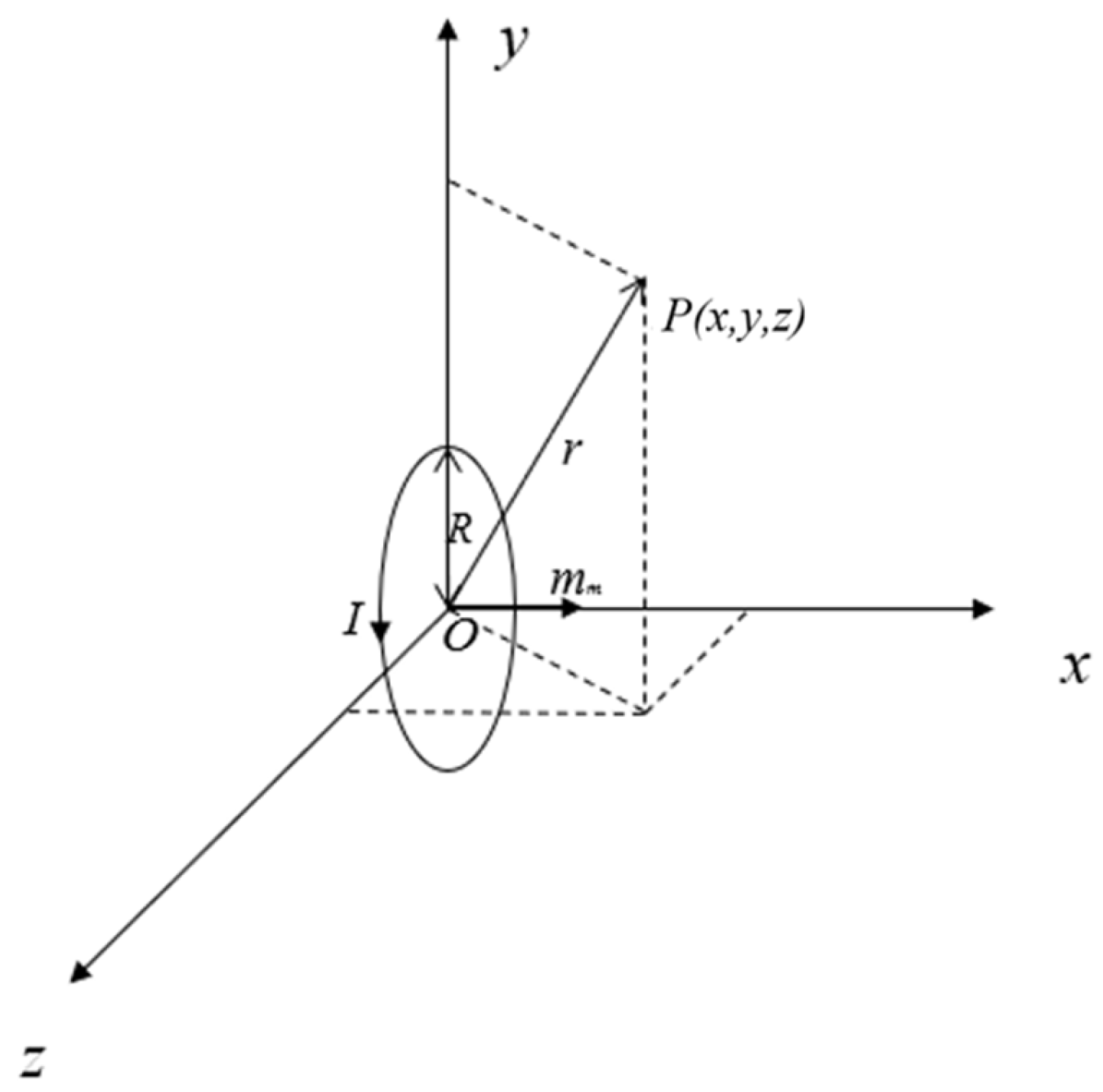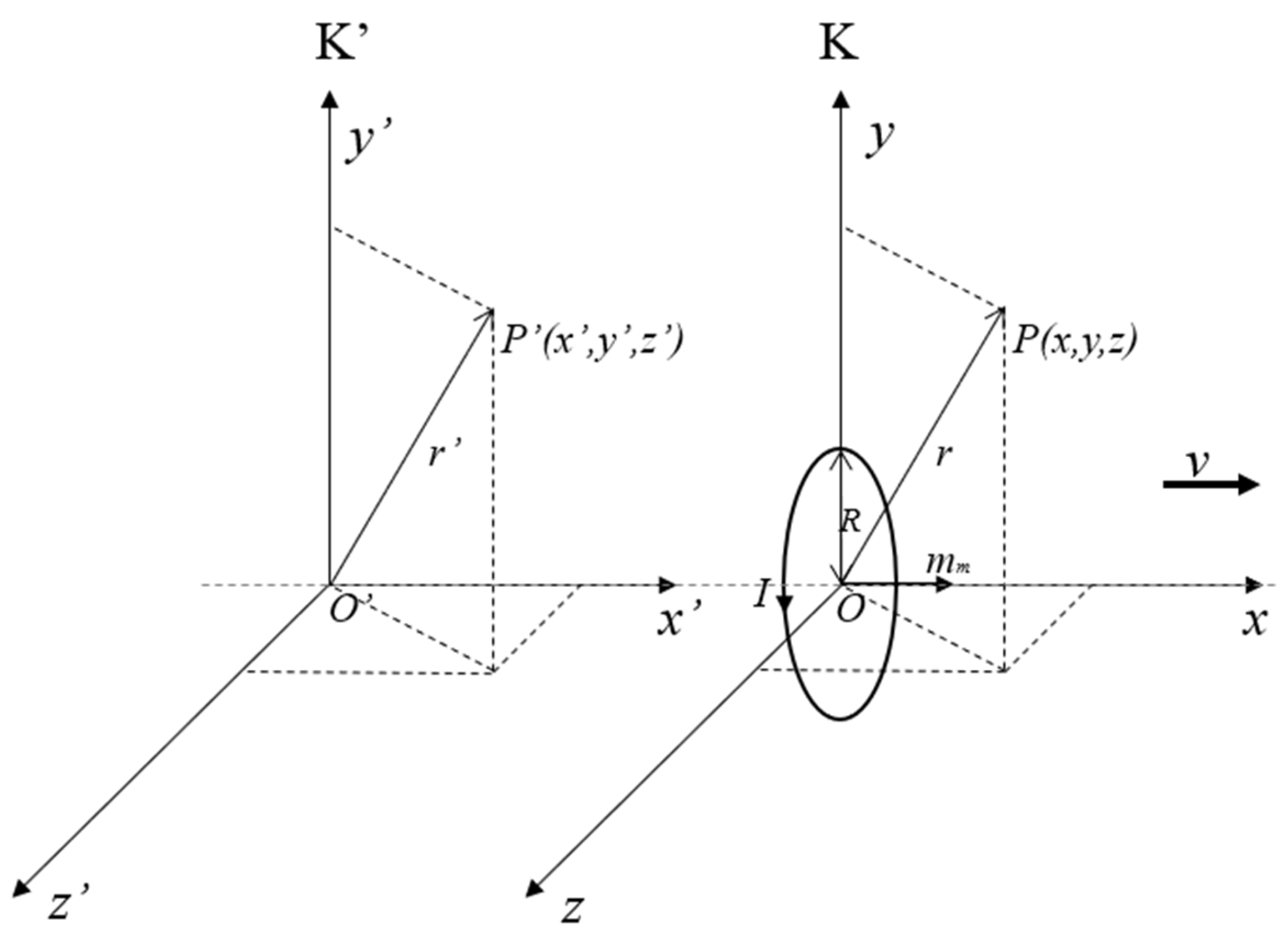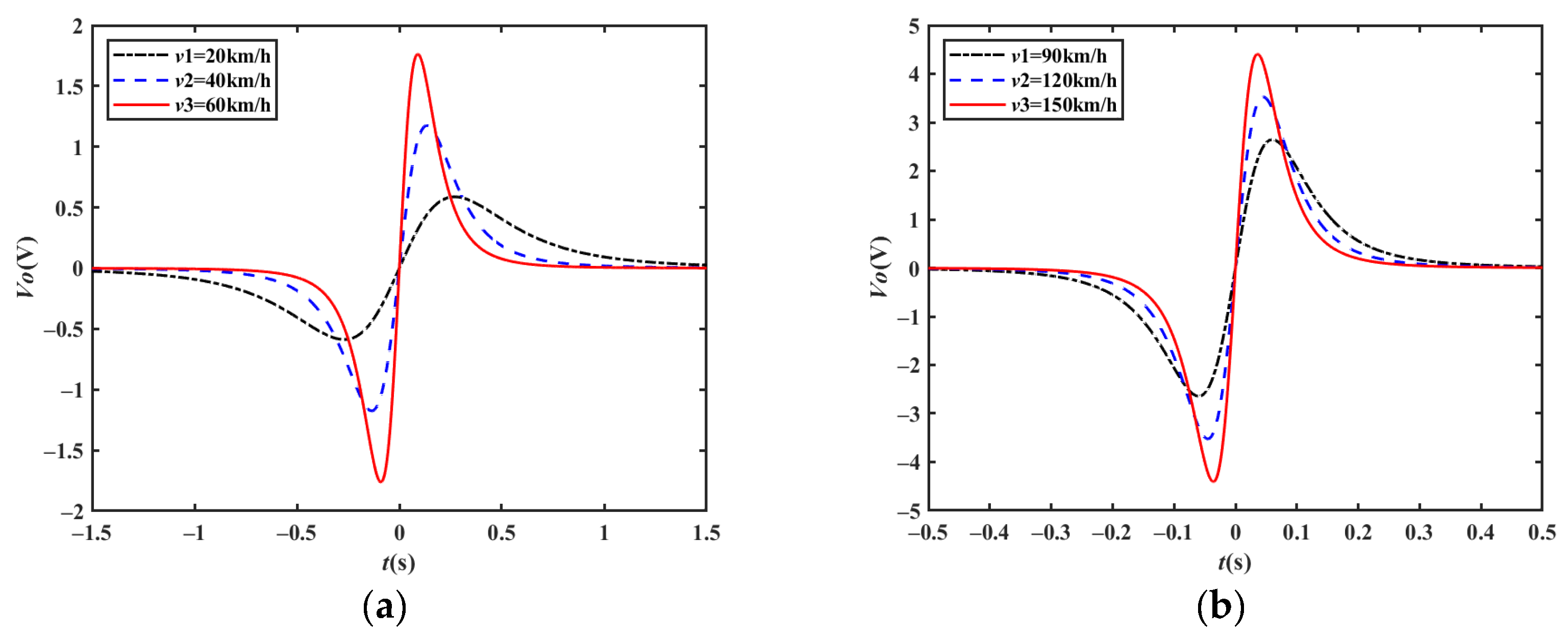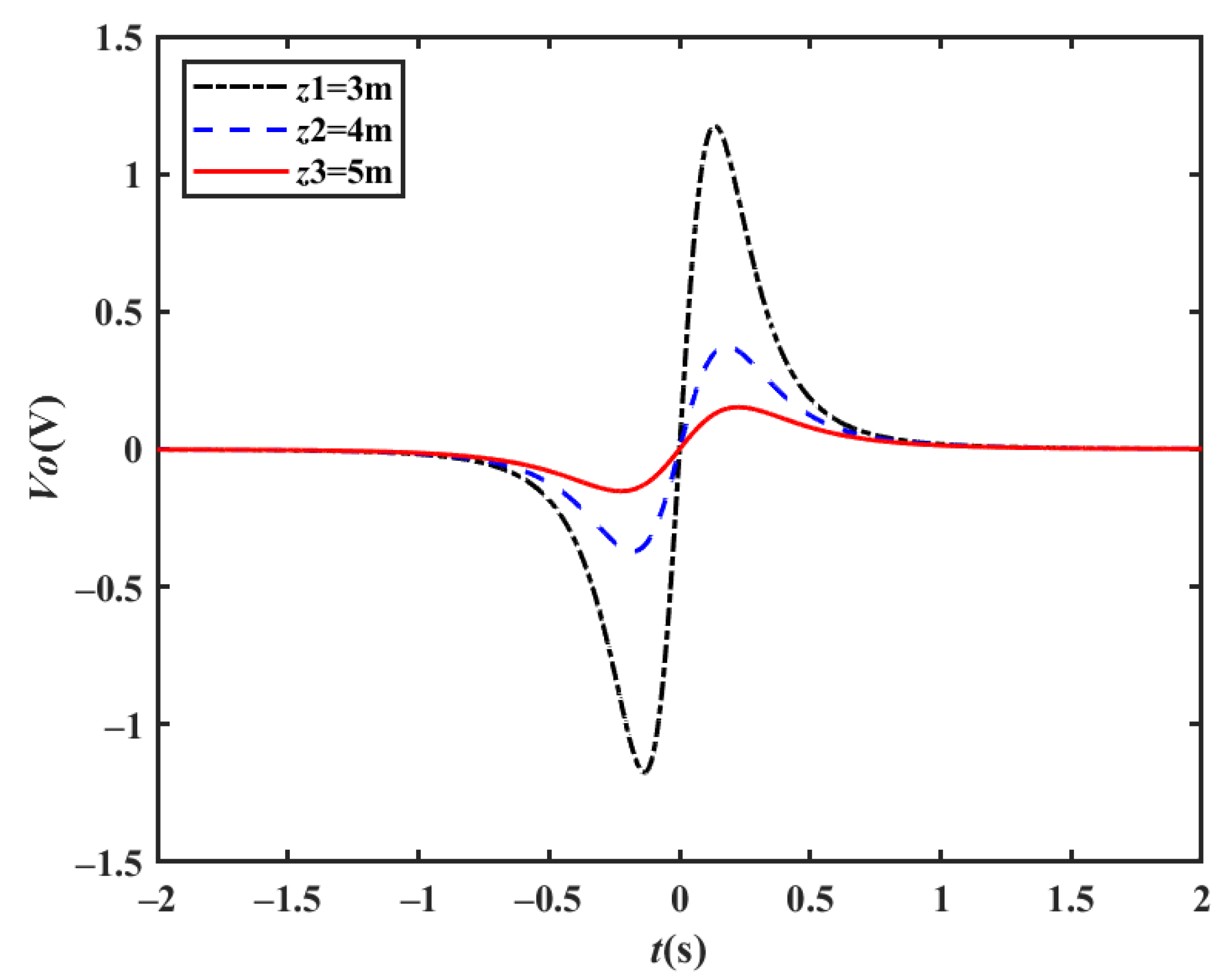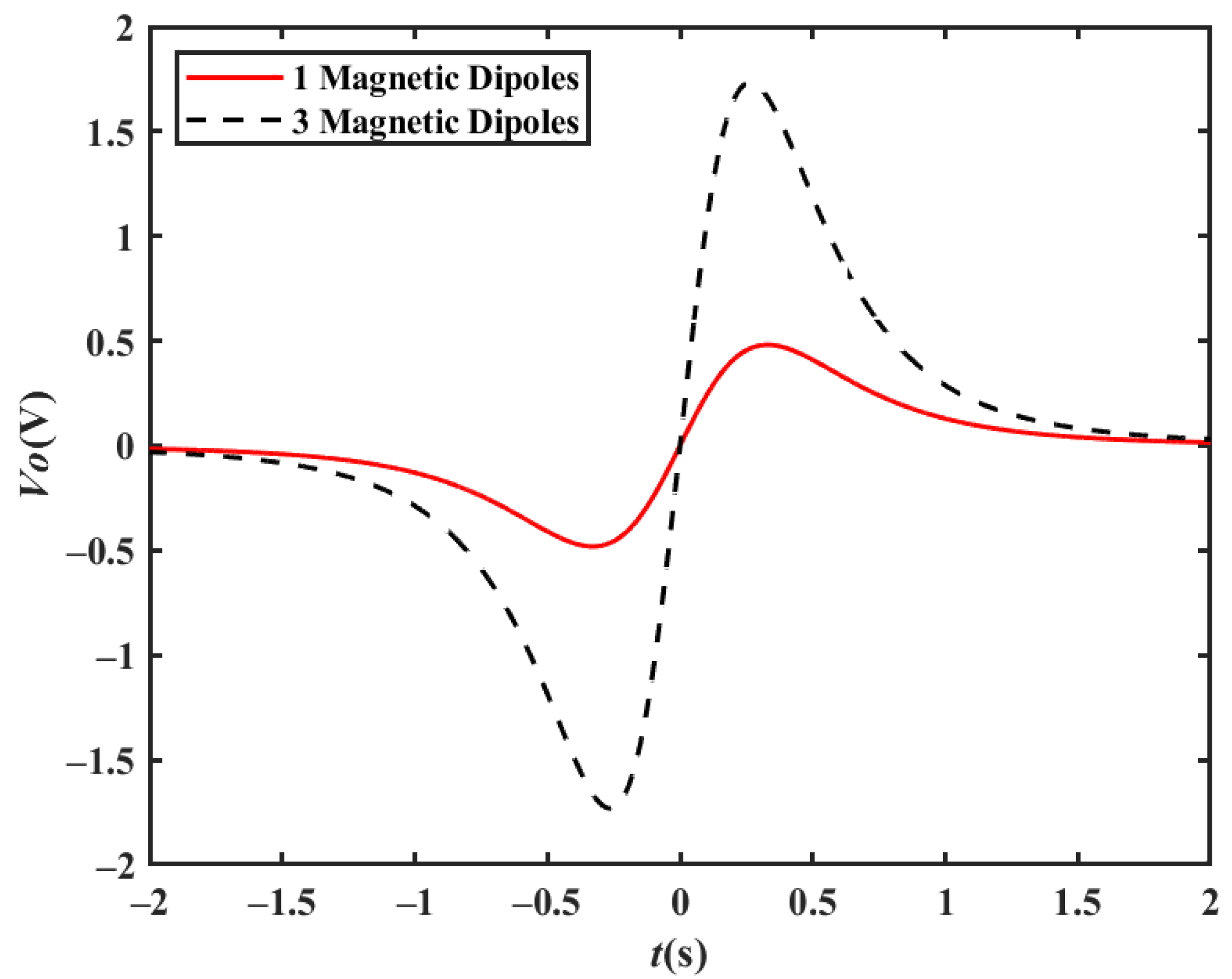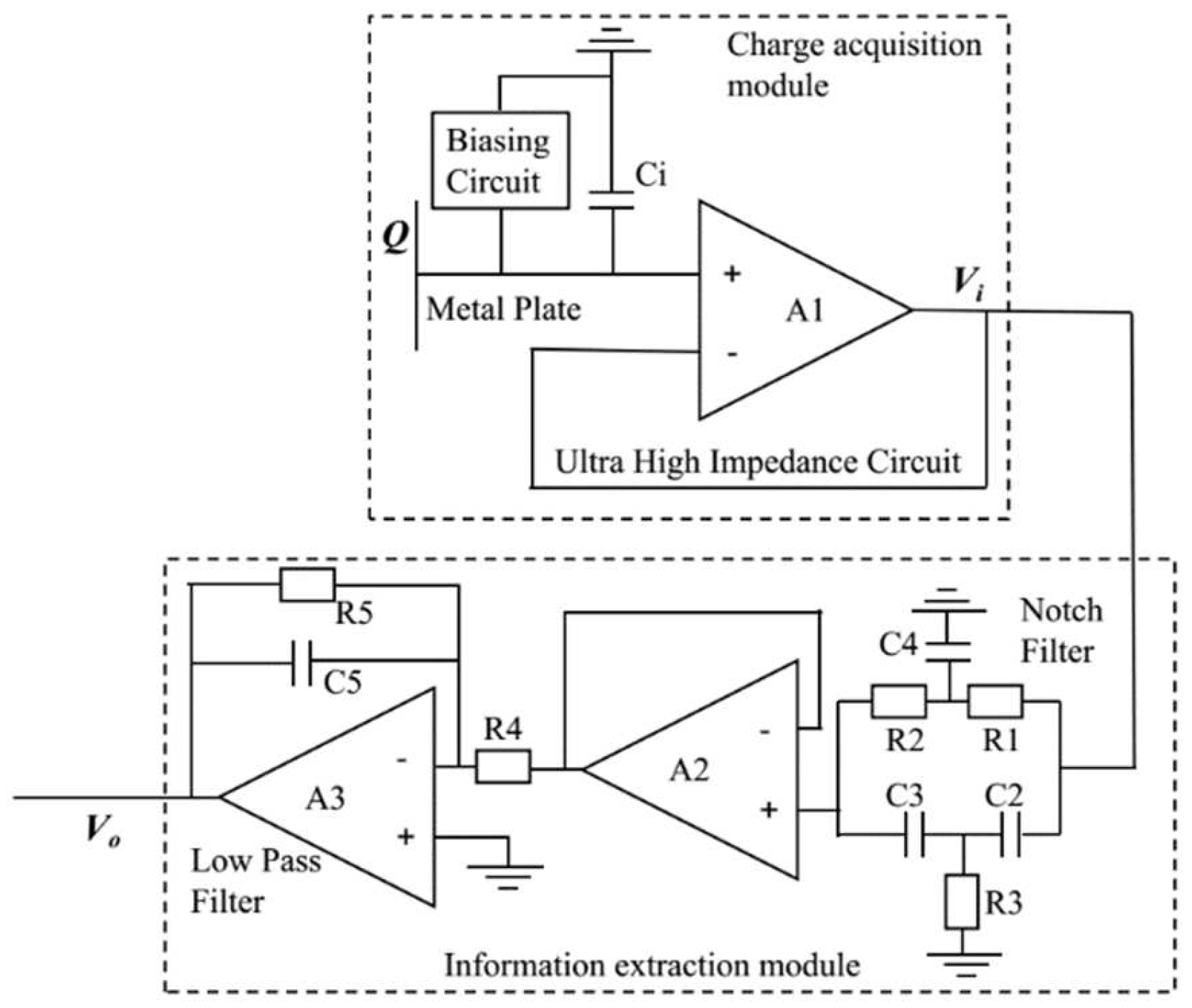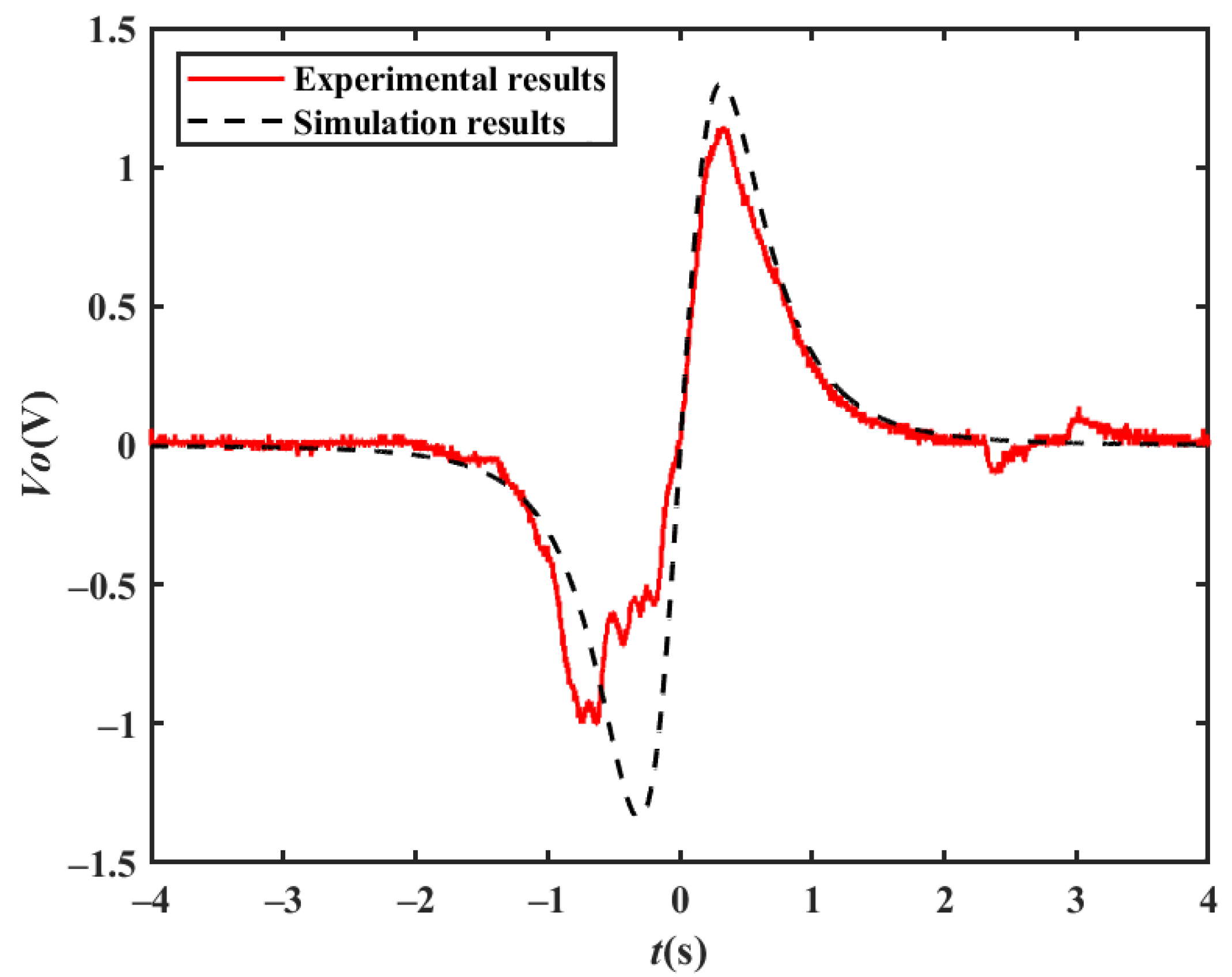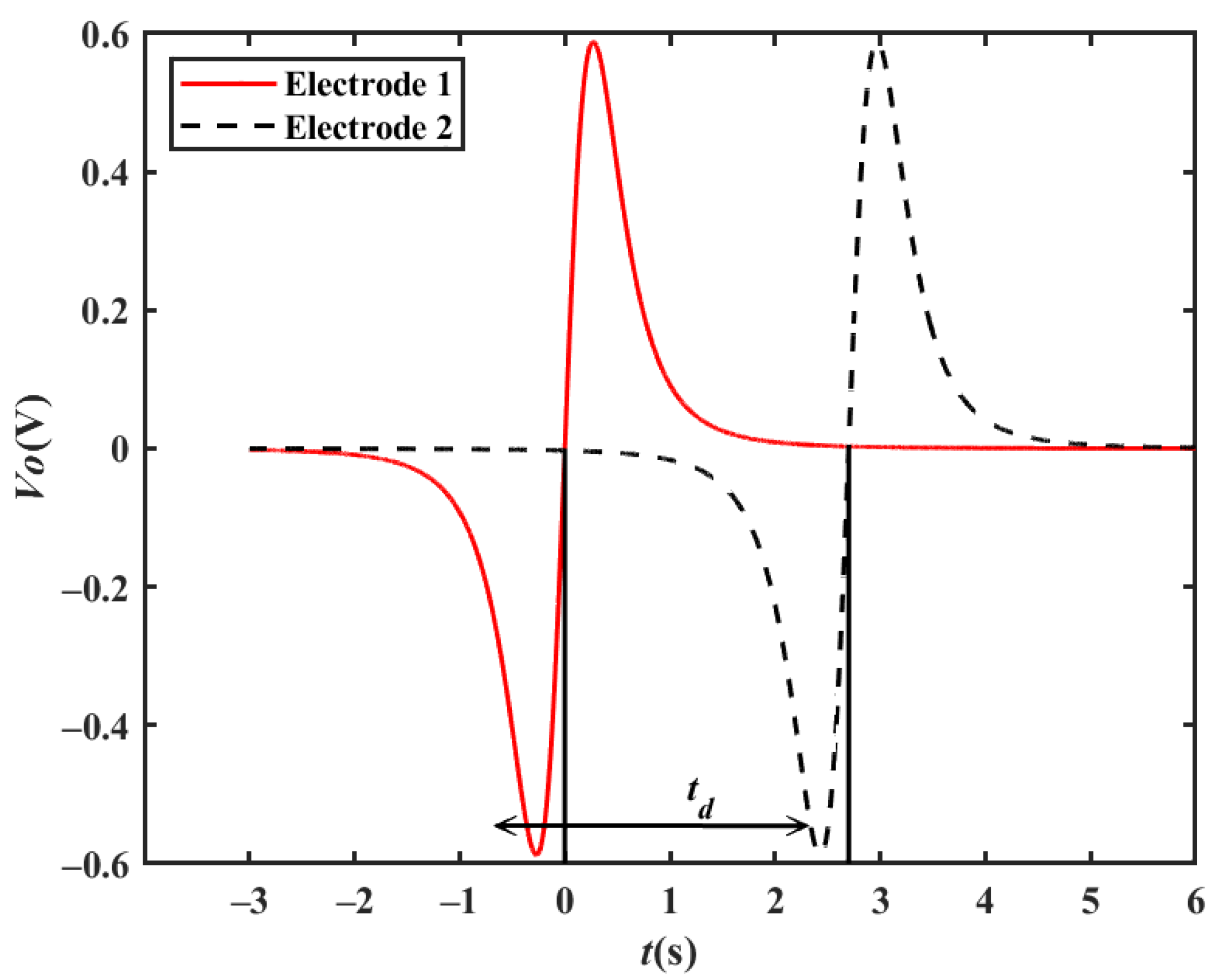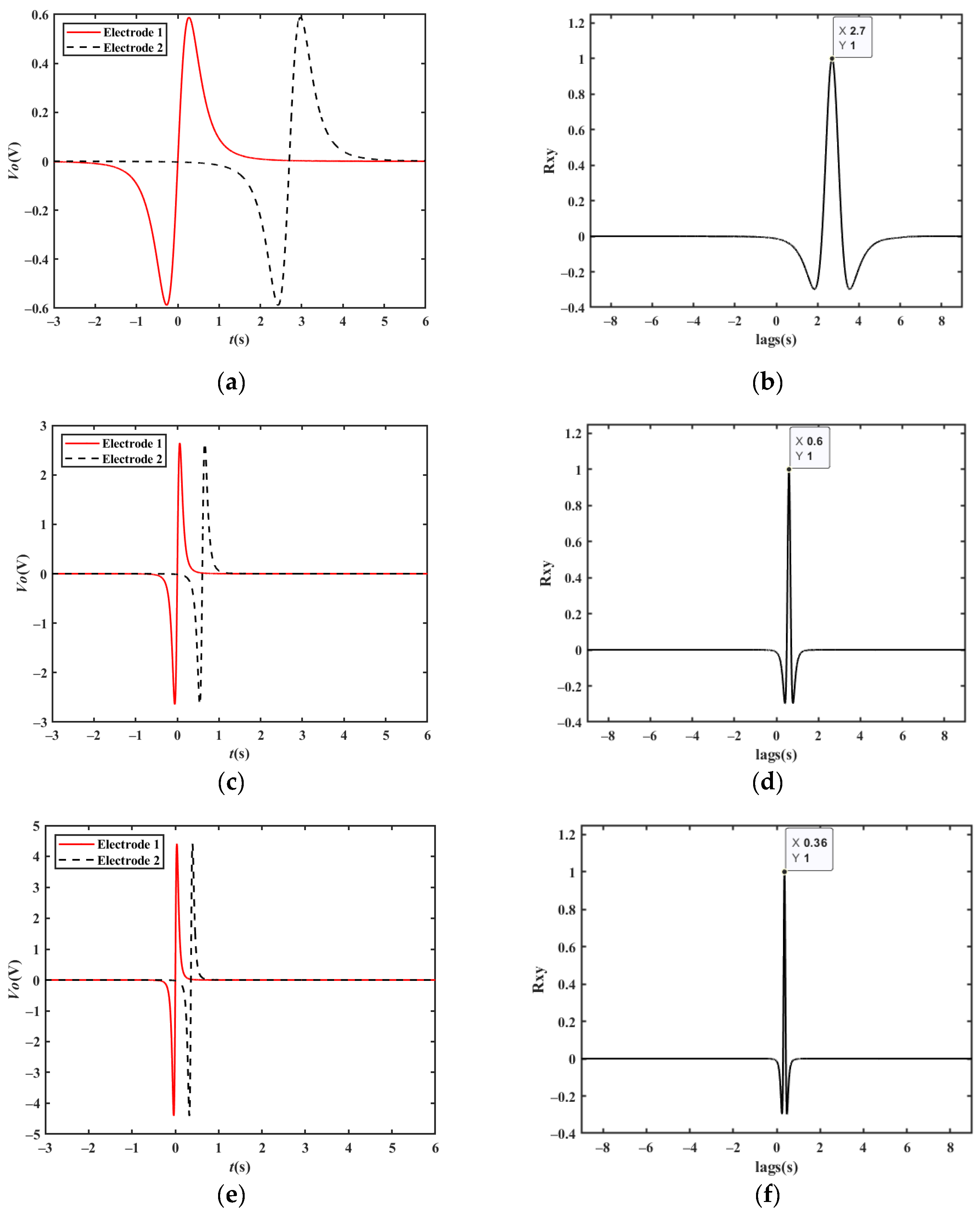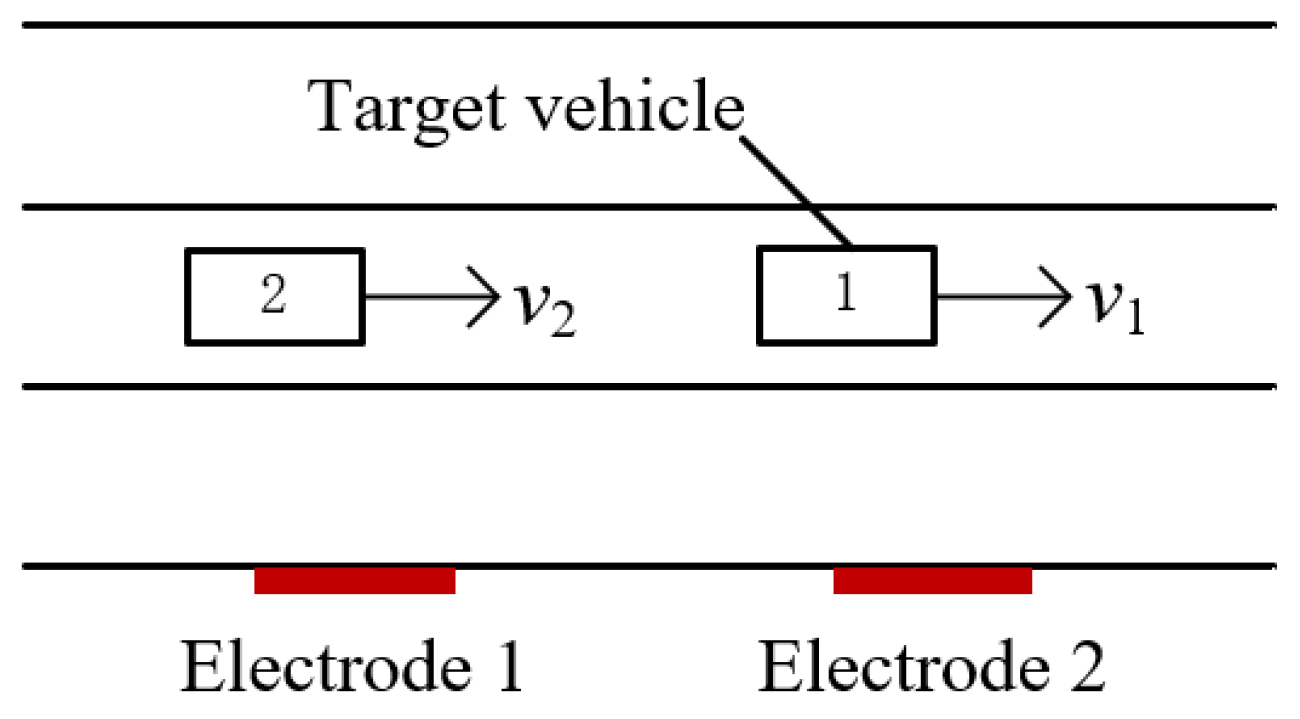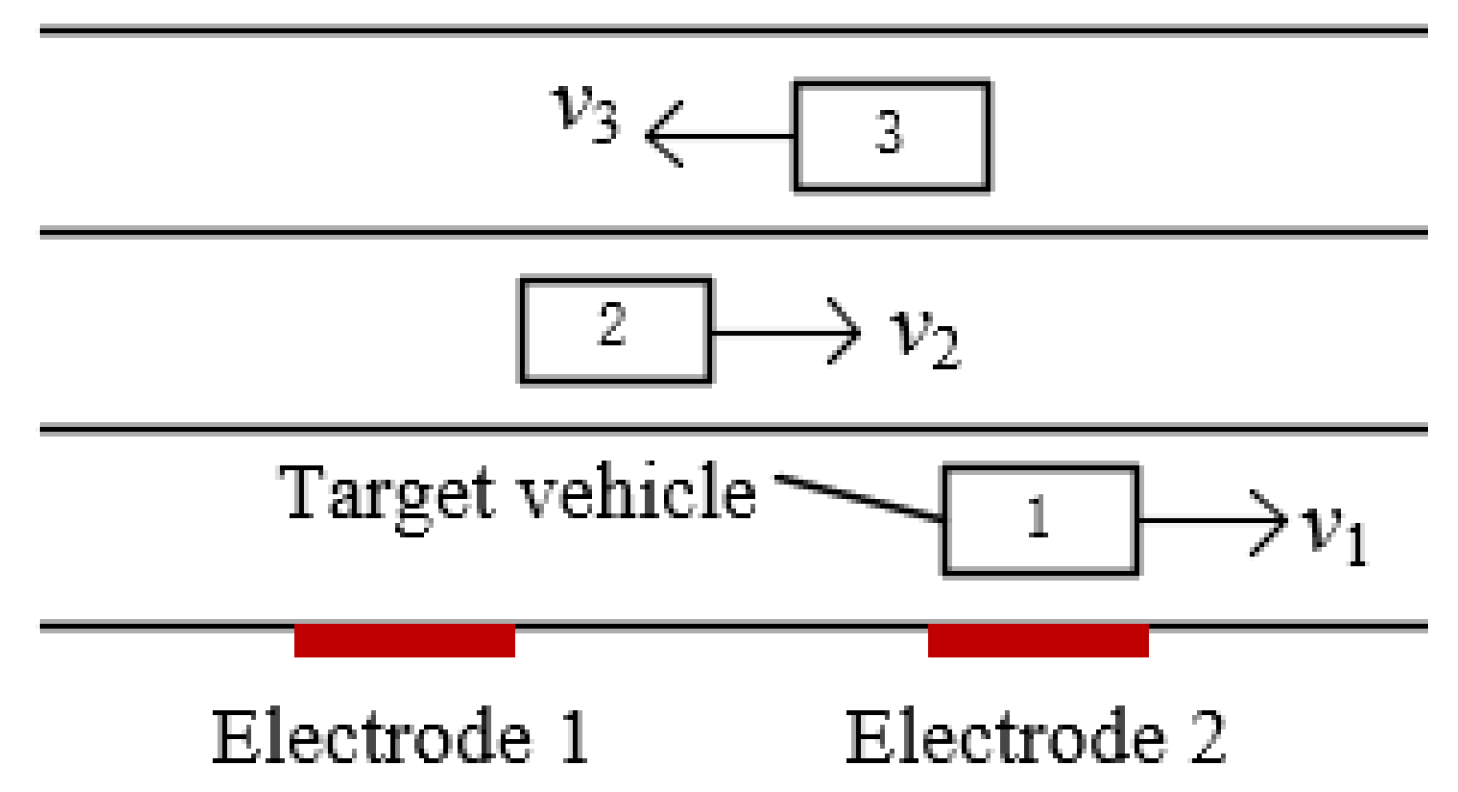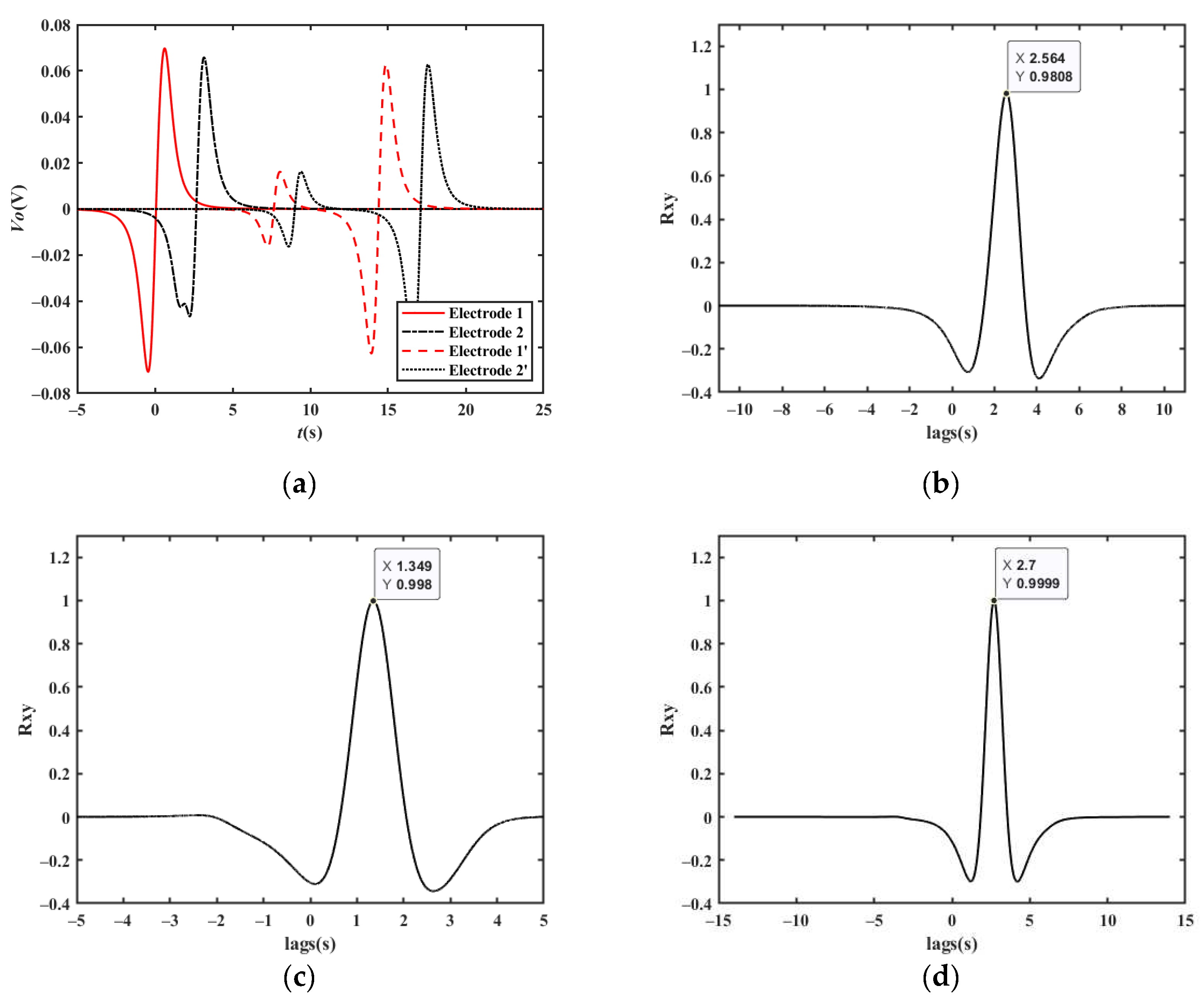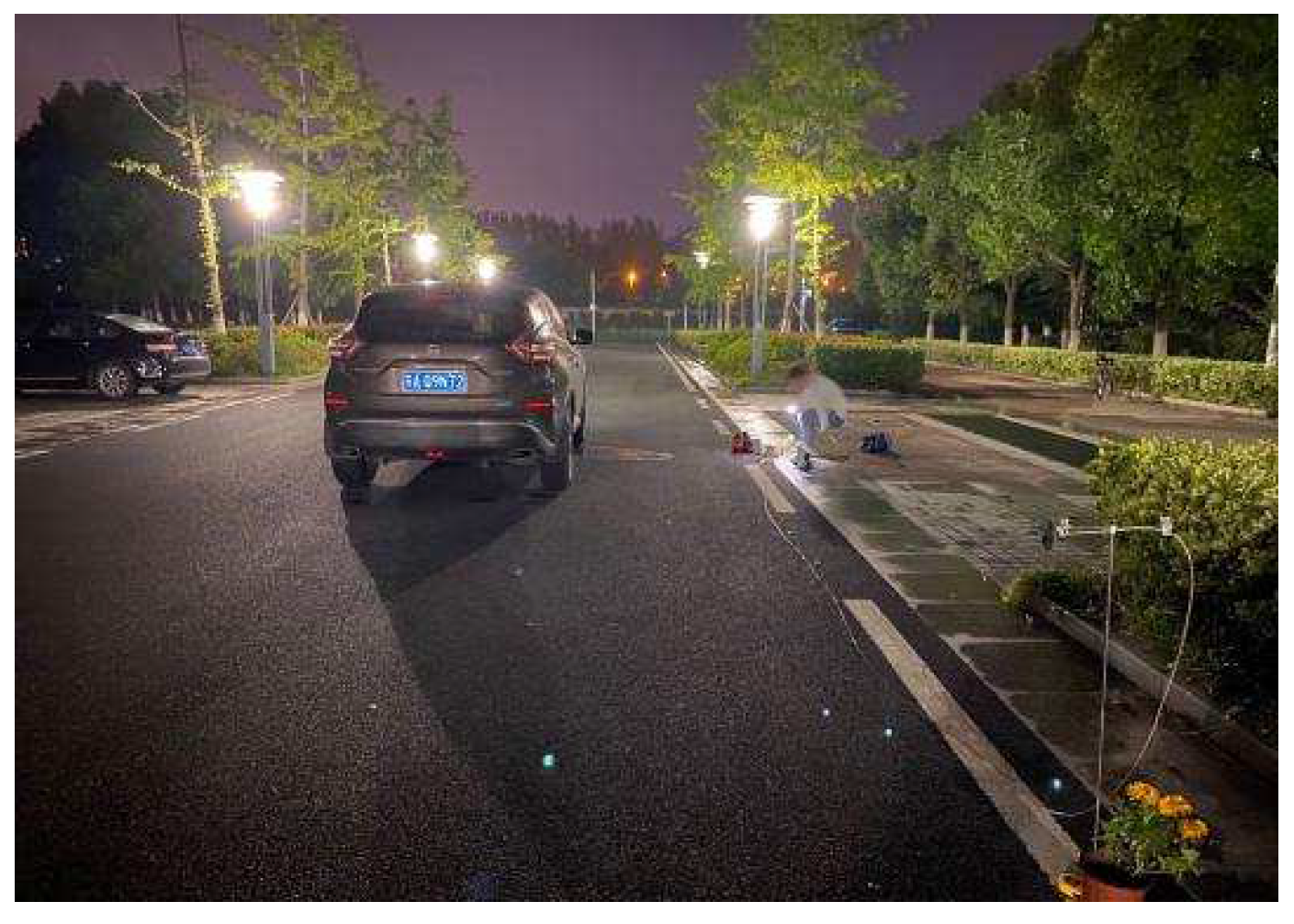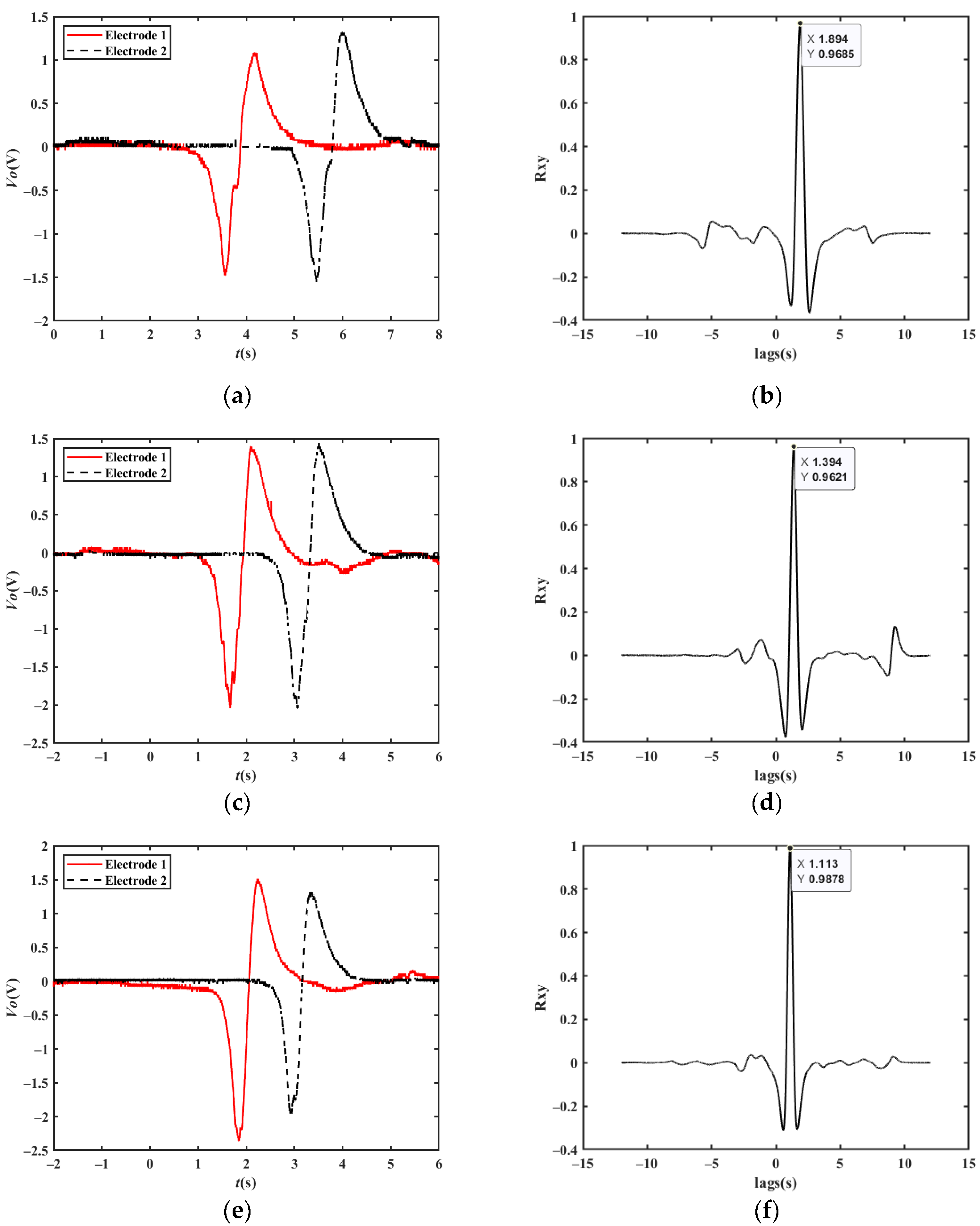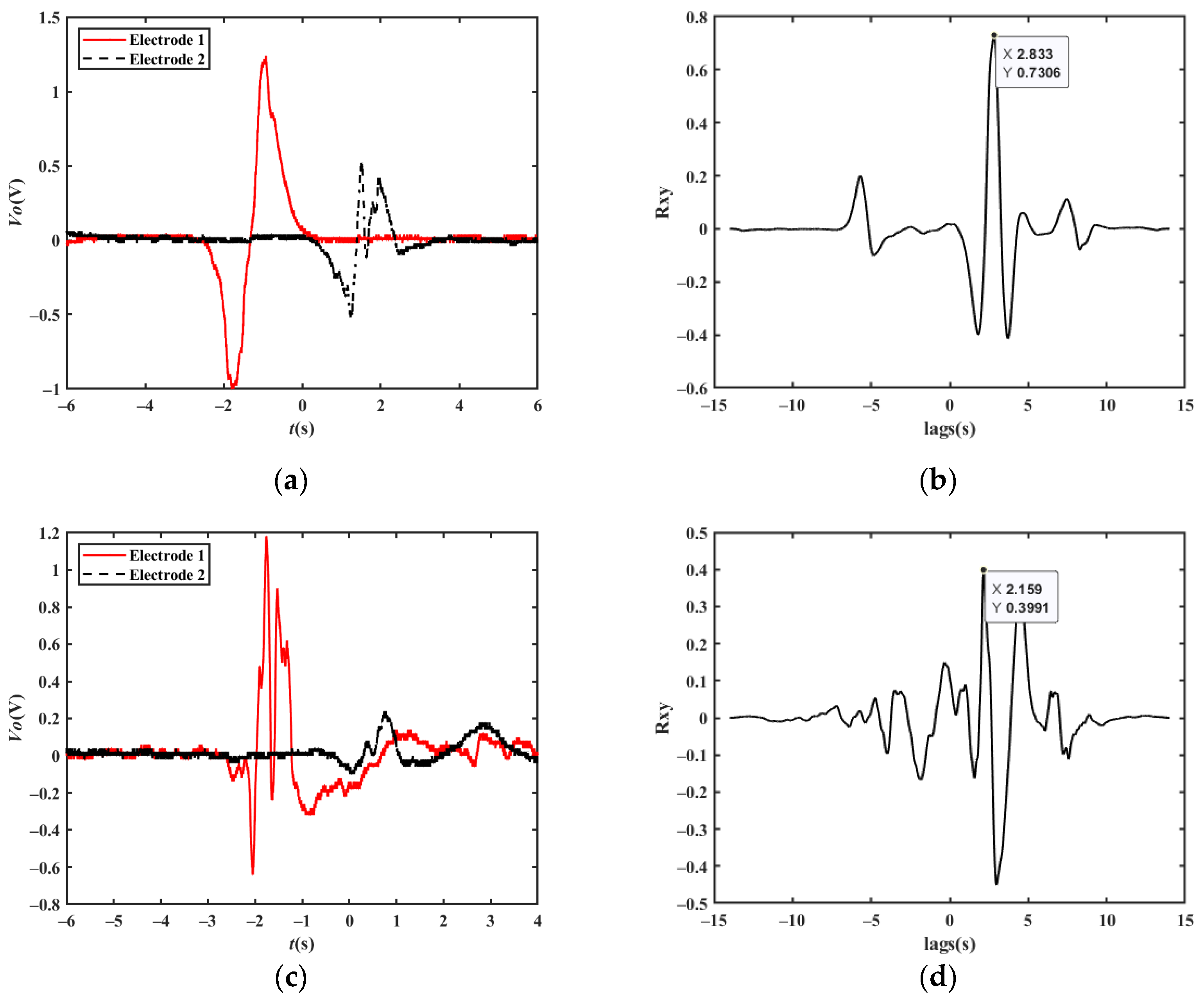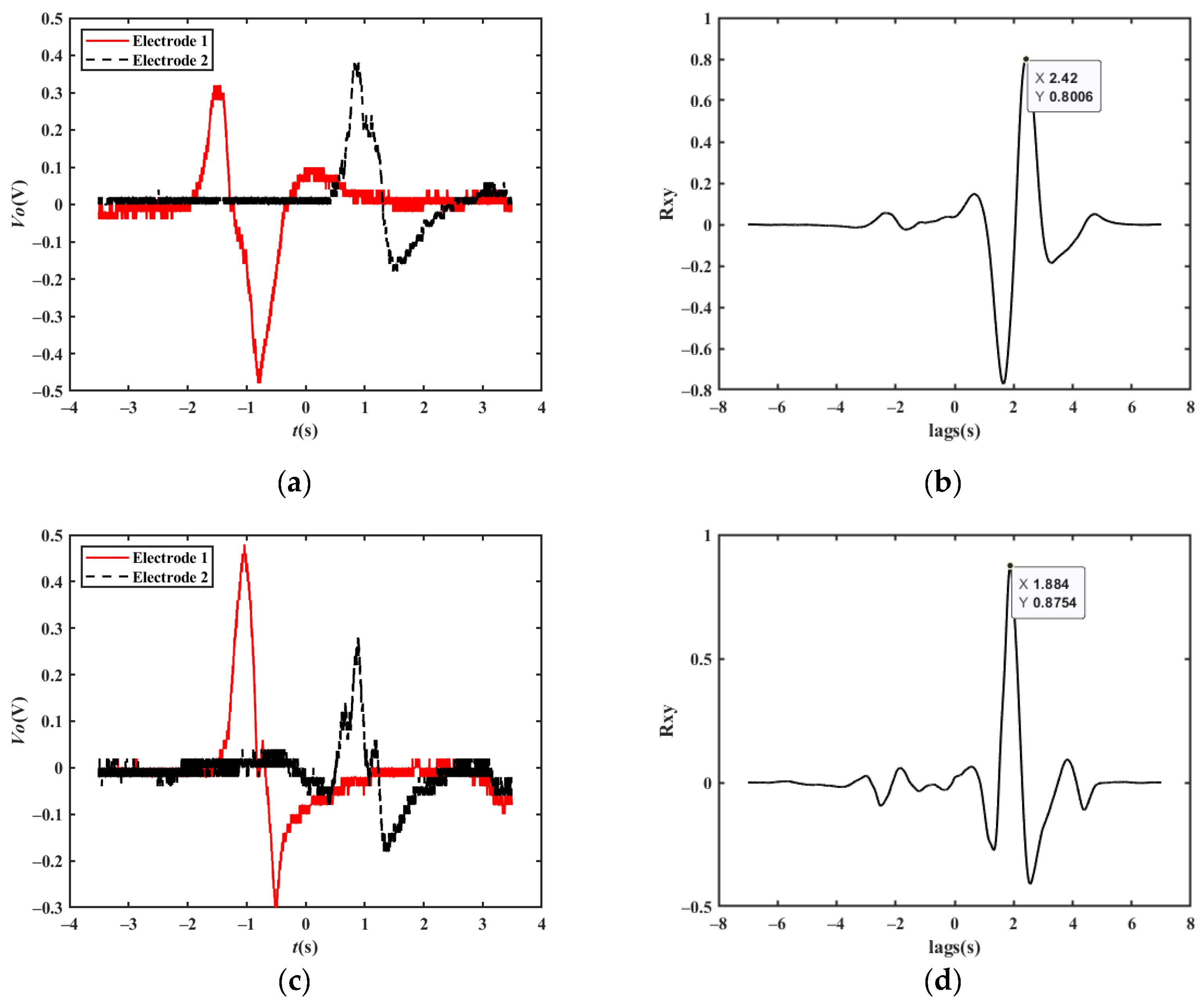1. Introduction
For moving targets, the current traditional velocity measurement technologies mainly include microwave radar technology [
1,
2,
3], laser technology [
4,
5,
6], ground-sensing technology [
7,
8,
9], and video camera technology [
10,
11,
12,
13,
14]. Microwave radar technology is mainly based on the Doppler effect, which is vulnerable to radio waves and has a low accuracy [
15]. Laser technology calculates velocity through the distance and time intervals of two measurements. Since the laser beam must be perpendicular to the reflective surface, this technology has disadvantages, such as a poor resistance to occlusion, a high equipment cost, and the inability to achieve lane-change velocity measurements [
16]. Ground-sensing technology uses the time interval required for the vehicle to pass two fixed inductive loop detectors in order to calculate velocity. However, it has high installation and maintenance costs, as it needs to be installed under the road. In addition, it also has disadvantages, such as being easily damaged due to road surface deformation and the inability to achieve lane-change velocity measurements. Video camera technology is the most widely used velocity measurement method, and it uses target tracking or a virtual coil. The target tracking method first selects the target feature points for identification, then uses an algorithm to track the target, and finally calculates the velocity through the displacement between the image frames. The virtual coil method actively places virtual coils in the measurement area and calculates the velocity by detecting a trigger that is activated from when a vehicle passes the coil. Although the video camera technology works relatively well, it is easily affected by environmental factors, such as light and weather. The velocity measurement accuracy depends on the resolution of the camera and the background noise reduction of the processing algorithms [
17]. Furthermore, when there are multiple vehicles driving in multiple lanes, it is often difficult to measure velocity [
18].
In addition to the traditional velocity measurement technologies, some innovative velocity measurement technologies have also been proposed.
To measure vehicle velocity, a measurement method has been proposed whereby two magnetic sensors are placed with fixed relative positions on the roadside. When the vehicle velocity is in the range of 5 m/s to 27 m/s, the velocity measurement error is less than 2.5%. However, this method requires a complex algorithm to obtain a high signal-to-noise ratio in order to ensure accuracy. Moreover, when using this method, large vehicles lead to large errors because of the complex magnetic fields [
19].
Another velocity measurement method combining infrared and ultrasonic sensors has been proposed, and it is relatively simple and low-cost but has poor occlusion resistance. Additionally, complex algorithms are required to overcome noise and environmental effects [
20].
A velocity measurement method based on Wi-Fi technology has been proposed, and it uses Wi-Fi signals emitted by roadside wireless devices to measure velocity by analyzing the impact of vehicles passing by the signal, with an error of less than 2.6 km/h. However, due to the interference of many other signals, the accuracy of the velocity measurement is greatly affected by the environment. Vehicle velocity above 60 km/h cannot be measured because of the limited sampling rate of the system [
21].
It is difficult to satisfy multiple factors at the same time with the current velocity measurement technologies, such as accuracy, equipment cost, algorithm complexity, and anti-interference ability. Therefore, the aim of the paper is to propose a method that can measure vehicle velocity with a high accuracy, a good stability, a low cost, a simple algorithm, and a strong anti-interference ability in several working situations, such as when a vehicle changes lanes.
When a target moves, it generates a low-frequency electric field, which reflects the position and state information of the target. As early as the last century, a ship’s electric field was an important object in the field of electric field detection.
A ship’s electric field is mainly caused by the body’s corrosion and the electromotive force generated by the hull cutting the geomagnetic field lines, the rotation of the propeller, and the spatial magnetic flux changes due to the magnetic hull motion [
22]. At present, the commonly used modeling technique for a ship’s electric field is magnetic modeling (i.e., magnetic dipole model) because of its simple structure [
23]. In fact, it is very difficult to completely rely on theoretical calculations to study the electric field characteristics of ships because of various complicated influencing factors. Therefore, some properties are usually obtained through practical experiments [
24].
The principle that the bodies of ships and vehicles can usually be regarded as magnetic dipoles is due to the fact that the magnetic anomaly of objects containing iron is much higher than that of the surrounding medium, leading to the distortion of the magnetic flux lines of the Earth’s magnetic field, thereby causing changes in the surrounding magnetic field. However, since different types of vehicles have different metal components and structures, they can be expected to produce different magnetic field signatures. For simplicity, the electric field of a moving vehicle is treated as a single magnetic dipole model [
25], which can be induced by a metal electrode and a charge sensor circuit with ultra-high input impedance [
26]. Previous studies conducted by our group have shown the feasibility of the recognition of hand motion direction and rotor direction based on charge induction [
27,
28].
Therefore, a velocity measurement method is proposed based on the charge induction principle, where two metal electrodes are placed in the moving direction of the target and connected to detection frontends, and a velocity measurement is obtained via the time characteristic of the charge change when a target passes by the two electrodes. The significant advantages of this method are that it can work effectively in a passive mode whether it is day or night, it is less affected by light and weather, and it can measure the velocity of vehicles changing lanes; it also has a low cost and is easy to implement.
This paper is organized as follows:
Section 2 introduces the theoretical derivation of induced charge on the surface of a metal electrode caused by a moving vehicle. In
Section 3, a two-electrode velocity measurement method is proposed based on charge induction, where the feasibility of several scenarios is analyzed in detail. In
Section 4, corresponding experiments are implemented to verify the effectiveness of the proposed method. Finally, conclusions are drawn in
Section 5.
2. Moving Target Model
A moving vehicle can be modeled as a moving magnet. A moving magnet creates an induced electric field in the surrounding space. The motion of the target can be analyzed by sensing the changing charge caused by the low-frequency electric field. A magnetic dipole is the most basic simulation unit for magnetism model analyses. For convenience, a single magnetic dipole moving in the direction of the magnetic moment is used to establish the vehicle body motion model.
A magnetic dipole refers to a planar current-carrying loop of any shape with a small area. As shown in
Figure 1, for a magnetic dipole whose magnetic moment is along the x-direction, the current path is assumed to be a circle with radius
R, and it is assumed that the loop radius
R of the source current I is much smaller than the distance r from the point to be measured
P to the center of the source current loop. Then, the magnetic field
B generated by the magnetic dipole at point
P(x, y, z) in space can be obtained by integrating the current loop according to the Biot–Savart law as follows:
where
K is equal to
,
r is equal to
, the vacuum permeability
, and
is the magnetic moment.
The moving magnetic dipole model is shown in
Figure 2. Let K’ and K be two inertial Cartesian coordinate systems; the K’ system is stationary, and the K system moves at a uniform velocity relative to the K’ system along the x’ direction at velocity
v. The origin of the K system is located at the center of the magnetic dipole, and the magnetic dipole moves along the x direction with the uniform velocity
v in the K system. At
t = t’ = 0, the origin O of the K system is coincident with that of the K’ system.
In the K system, since the magnetic moment is along the x-axis direction, the magnetic field component at any point
P(x, y, z) in the K system can be obtained as follows:
where
, and
c is the velocity of light in the medium. Since the K system is relatively stationary with the magnetic dipole, leading to
, the electric field component of the moving magnetic dipole in the K’ system can be simplified as
According to the coordinate transformation relationship,
, the electric field component is obtained as follows:
The charge is generated on the surface of the metal electrode due to electrostatic induction, and the relationship between the amount of induced charge and the electric field intensity can be expressed as
where
Q is the amount of induced charge on the conductor surface, and
A is the surface area of the metal electrode.
In the car velocity measurement model, it is assumed that the motion direction is along the x′ axis, the detection electrode is placed on the positive half-axis of the z′ axis, and the electrode plane is perpendicular to the z′ direction. Then, the inducted charge on the electrode is mainly from the electric field component
Ez′. Since the radius of the detection electrode is much smaller than the detection distance z′, for the convenience of calculation, the electric field detected by the electrode is regarded as a uniform electric field; then, Equation (5) can be simplified as
To detect the amount of induced charge, the metal electrode is connected to the capacitor
Ci, and the voltage
Vi across the capacitor is proportional to the amount of induced charge
Q. In order to reduce the influence of noise,
Vi is filtered to finally obtain
Vo, and the processing process is shown in
Figure 3.
According to Equation (4), the output voltage when the target moves horizontally is
where
H is the gain of the filter circuit.
To illustrate the above analysis, some simulations are given below.
Assuming that the magnetic moment of the vehicle
mm is 1 A/m
2,
A = 0.01 m
2,
Ci = 10 pF,
H = 1, the position of the detection electrode is
x′ = 0, the distance between the electrode and the driving lane is
z′ = 3 m, and the height of the electrode relative to the center of the magnetic moment is
y′ = 0.1 m; the simulation output waveforms from 20 km/h to 150 km/h are shown in
Figure 4, where the output voltage
Vo is a center-symmetric double-peak waveform, and the time point corresponding to the center-symmetric point is when the moving target passes through the center of the detection electrode. When the electrode detection distance remains unchanged and the target velocity increases, the width of the output waveform becomes narrower, and the peak amplitude is proportional to the vehicle velocity.
When the distance
z′ between the detection electrode and the driving direction changes, the output waveform for the moving target velocity
v = 40 km/h is as shown in
Figure 5, where the waveform amplitude decreases, and the waveform width does not change much, with the peak coordinates slightly delayed.
Due to the diversity of vehicle body types, multiple magnetic dipole models are required for vehicle bodies with a large size and a complex structure. Therefore, three magnetic dipoles distributed along the x-axis with a distance of 1 m are examined in a simulation. Assuming that the velocity of the vehicle is 20 km/h, the position of the detection electrode is
x′ = 0, the distance between the electrode and the driving lane is
z′ = 3 m, and the height of the electrode relative to the magnetic moment center is
y′ = 0.1 m; the output waveforms for a single magnetic dipole and three magnetic dipoles are shown in
Figure 6. It can be seen from the simulation results that multiple magnetic dipole models only affect the waveform size and that the waveform characteristics remain unchanged.
Furthermore, the experimental verification of the magnetic dipole model is implemented, and the detection frontend is shown in
Figure 7. The high-impedance circuit [
26] proposed by our group is used to convert the induced charge
Q on the metal plate into voltage
Vi; the input capacitance
Ci is about 10 pF, and the input resistance is about 100 GΩ, where the input capacitance
Ci is the equivalent input capacitance, including the parasitic capacitance circuit and the frontend operation amplifier input capacitance. A notch filter of 50 Hz and a low-pass filter with a characteristic frequency of about 50 Hz are used to suppress noise, amplify the signal, and output signal
Vo.
In the experiment, the area of the electrode is about 0.005 m
2, the distance between the electrode and the driving lane is about 2.75 m, the electrode height is 1 m from the ground, and the filter circuit gain is 10. In the theoretical simulation, the magnetic moment of the vehicle is
mm = 1 A/m
2, the velocity
v = 16 km/h, the electrode area
A = 0.005 m
2, the capacitance
Ci = 10 pF, the filter circuit gain
H = 10, the detection electrode position
x′ = 0, the distance between the electrode and the driving lane is
z′ = 2.75 m, and the height of the electrode relative to the center of the magnetic moment is
y′ = 0.05 m.
Figure 8 shows the experimental results and the simulation results, where the characteristics of the experimental results are basically consistent with those of the theoretical results, but the peak value is different, which may be due to the inaccurate setup of the size and specific location of the magnetic moment of the car.
5. Conclusions
The technology developed to measure velocity has become mature, and there are various types that can be used, including active radar technology, laser technology, passive ground-sensing technology, and image technology. It is difficult to satisfy multiple factors at the same time with the current velocity measurement technologies, such as accuracy, equipment cost, algorithm complexity, and anti-interference ability. Therefore, this paper proposes a passive method for measuring velocity by inducing charge changes based on the principle of the charge induction of a single vehicle changing lanes and multiple vehicles driving in multiple lanes at the same time. Compared with video technology, radar technology, and ultrasonic technology, the proposed method adopts a cross-correlation algorithm to obtain the time characteristics in order to achieve the velocity measurement; the algorithm is simple and easy to implement at a low cost. Moreover, the proposed method is completely passive, unaffected by light and rain, and immune to occlusion. The significant advantages of this method are that it can work effectively in the passive mode whether it is day or night, it is less affected by light and weather, and it can measure the velocity of vehicles changing lanes; it also has a low cost and is easy to implement.
Section 1 introduces the technical background of the velocity measurement field. In
Section 2, the waveform of the induced charge change on the electrode surface caused by a vehicle is theoretically deduced and verified by experiments. In
Section 3, the velocity measurement method is given, and the simulation results of several complex situations are analyzed. In
Section 4, the experimental results are implemented to prove that the method is feasible.
According to the experimental results, the aim of future work should be to carry out experiments for multiple vehicles and to design a signal processing circuit in order to obtain velocity measurements in real time.
